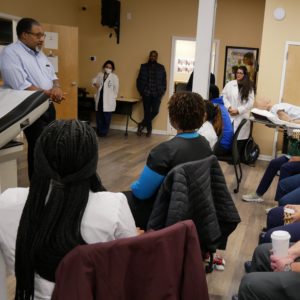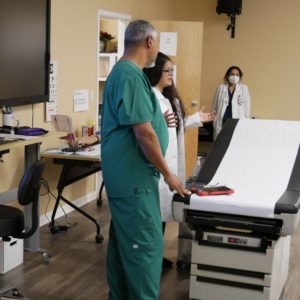“The Dreaded Match” August 14.2019
Student Body at AUIS, I recently came across an article published by UNDARK, titled:
“A Doctor Shortage is Looming, and a Clinton-Era Policy is partly to Blame.” Authored by Kunal Sindu; dated July 25, 2019.
This essay reminded me of the annual anxiety-provoking event that most senior medical students are facing each year on Match day. Various publications have once again detailed the anticipated doctor shortage by the year 2032. Estimates ranging from 46,000 to 121,900 physicians was quoted by Sindu. The predicted doctor shortage is not the result of the lack of physicians being trained and graduating from medical school; but the limited number of residency positions available to obtain postgraduate training in the U.S. There has been a dramatic increase in the number of osteopathic medical schools opening in the US, a report in US News detailed that a 162% increase in first year enrollment at osteopathic schools is expected between the 2002 and 2020. MD Granting schools anticipate a 29% increase within that same period. Additionally, international foreign medical graduates are also competing for coveted residency positions. To put the numbers into perspective, in 2019 there were 38,376 applicants for 32,194 first year residency positions. There were 5,080 US international medical school graduates (IMG) who entered the match, with 2,997 successfully obtaining a residency match, a rate of 59%. There were 6,869 non-US citizen IMG’s entering the match of which 4,028 matched at a rate of 58.6%. Make note that the AUIS 2018 match rate was 74.2%, out pacing the international school performance rate. Considering all international medical graduates including both US and nonUS citizens; their respective match rate was the highest since 1990 and 1991.
(Source: The Match. National Registry Match Program)
The disproportionate number of doctors graduating from medical school and the limited number of residency positions is the result of a law that was passed by Congress in 1997. The Balanced Budget Act which was revised in 1999 limited Medicare reimbursements to postgraduate institutions, capping the number of medical school graduates training as resident in the U.S. teaching hospitals. The American Medical Association in 1997, prior to the Balanced Budget Act being enacted, supported the reduction of the number of U.S. residency positions by approximately 25 percent. The reasoning, “the United States is on the verge of a serious oversupply of physicians.”
Well known to matriculating medial students, the fact that a medical student can successfully acquire their medical degree, however without a residency; they cannot be licensed to practice medicine within the United States. Unfortunately, each year thousands of residency applicants fail to secure a residency slot. Although the number of residency positions has increased, the number of available residency slots has not paralleled the number of graduating physicians and the need for more physicians to meet U.S. health care needs.
The anticipated doctor shortage is compounded by the fact that the age distribution of physicians has shifted, especially in rural America. The total number of rural physicians from the years 2000 to 2017, grew only 3%, the number of physicians under 50 years of age living in rural areas decreased by 25%. As reported by Skinner et. Al. NEJM. 381;4 July 25, 2019;
“By 2017 more than half of the rural physicians were at least 50 years old, and more than a quarter were at least 60. Twenty percent of the country’s population lives in a rural area, and the ratio of physicians to patients is 1 to 2,500, which means that 60 million people are dealing with the impact of this shortage.”
Historically, rural areas in the United States suffer disproportionately from inadequate access to health care. In 2018, according to the Health Resources and Services Administration (HRSA), 66% of Health Professional Shortage Areas for primary care and 62% of those for mental health were located in rural or partially rural areas of the country. Although there is disagreement about the adequacy of the overall physician supply, there is little disagreement that the uneven distribution of physicians presents serious access problems in many rural areas. Limited access to physicians can reduce access to preventive care and exacerbate unmet health needs, leading to costly hospitalizations and poor health status.
Despite decades of private – public-sector initiatives aimed at increasing physician supply in rural areas, these projections of the rural physician supply are troubling. In 2030, residents of rural areas will have access to one third as many physicians per capita as their suburban and urban counterparts will. Yet rural residents are likely to be older, poorer, and in worse health than city dwellers, with a lower life expectancy, and they are more likely to be uninsured.
Until major changes have been implemented, and as a result of the match being so competitive, students are encouraged to focus on performing well on their USMLE exams, grade point average, performance reviews on clinical rotations and references. In addition, satisfactorily completing the thirteen Entrustable professional activities prior to residency commencement is expected by residency directors.
Don Penney MD.MSC.FACEP.
Source material gathered from:
A Doctor Shortage Is Looming, and a Clinton-Era Policy Is Partly to Blame, – https://undark.org/2019/07/25/looming-doctor-shortage/


